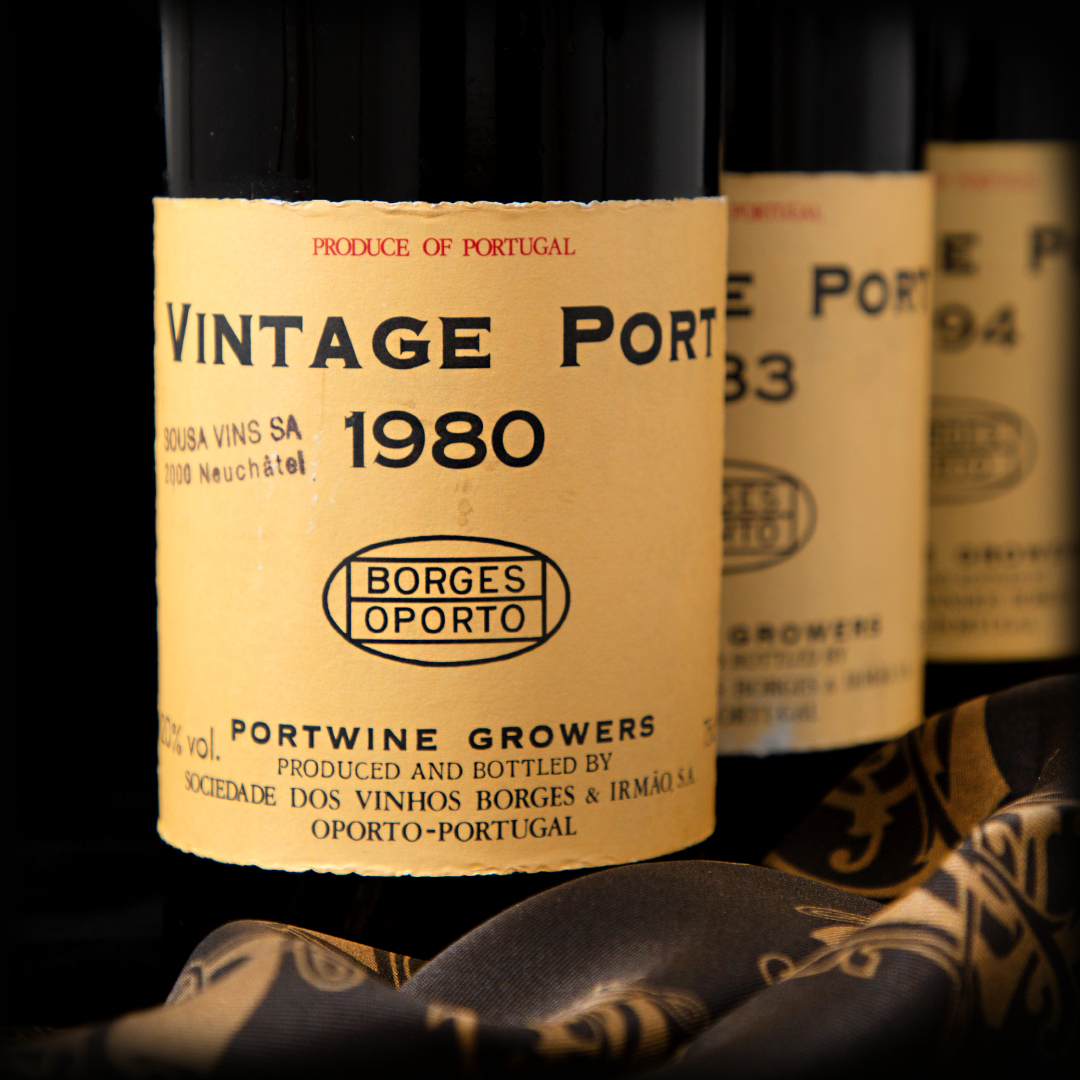Borges Porto Vintage Port
Discover the history of Port, where power and extraordinary wealth meet!
The writings of Strabon, the famous Greek geographer, attest that the inhabitants of the northwestern part of the Iberian Peninsula were already drinking wine two thousand years ago. At the beginning of the II century, the Romans arrived and settled there for more than half a millennium, during which time they cultivated vines and made wine along the Douro River, where Port wine is produced today. It was in 1139 that the Port wine entered a period of prosperity, with the birth of the Kingdom of Portugal, which promoted wine exports.
However, it is only from the XVth century that the development of the Port wine takes place thanks to the Windsor Treaty signed in 1386. This one forged close commercial links between England and Portugal leading many British merchants to settle permanently in Portugal. Large-scale exports to the United Kingdom became more and more important and were even exchanged for typically Portuguese products such as Bacalhau.
In spite of the commercial exchanges facilitated by the agreement of the two countries, a problem persisted: the Portuguese wine could not support the long journey across the Atlantic Ocean. The British, living in Portugal, had the ingenious idea of pouring a bit of brandy after the fermentation of the Port wine, in order to stop its evolution and thus guarantee its good condition. Nowadays it is this method called "fortification of the wine" which is the trademark of the Port.
Now that we have mentioned the historical aspect of Port, let's take a closer look at its elaboration. The creation of a good Port begins with the richness of its soil and the ability to know how to maintain its vineyard. The majority of the vineyards producing Port are located on terraces dug into the arid hillsides overlooking the river, making it impossible to work with machinery. It is therefore by obligation and tradition that the maintenance of this one is done entirely by hand and this still today.
Due to its geographical position, the Douro Valley is full of microclimates with different characteristics that give birth to different grape varieties. Today, about fifty grape varieties are listed, of which 31 are authorized by the Port and Douro Wines Institute (IVDP).
Let's discover together some of the most frequently used grape varieties in the elaboration of great Port such as Borges Vintage. One of the main ones is the Touriga Nacional; very tannic it gives to the Port a fabulous aromatic richness concentrate! Then comes the red varieties Touriga Franca, Tinta Barroca, Tinta Roriz and Tinto Cão. The white varieties Gouveio, Malvasia Fina, Moscatel Galego, Rabigato and Viosinho bring the characteristic sweet signature of Port.
Let's now look at the different Port families:
The «Vintage»: representing roughly 2 to 3% of the production, these Port are considered the best! Each grape is carefully selected before being approved by the IVDP. Aged for two years in oak barrels before being bottled, it usually keeps for more than 10 years before being enjoyed.
The «Late Bottled Vintage or L.B.V»: Also made from a single harvest, it is produced with the same grapes as the Vintage. The difference lies in the fact that they are aged for a much longer period, between 4 and 6 years. The conservation is therefore shorter and the Port is consumed in the few years following the bottling.
The «Ruby»: This is a blend of several vintages that have been aged for 3 to 5 years in cask. Ruby Port with the designation "Vintage Character", "Ruby Reserve" or "Finest Reserve" can be characterized as a guarantee of quality.
The «Tawny», classified according to their age, are divided into 4 sub-categories: Basic, which have aged 5 to 6 years ; Reserves, which have aged 7 to 8 years ; Colheitas, which have aged for a minimum of 7 years in cask and filtered before bottling and mentions of age 10, 20, 30, and over 40 years obtained by blending wines aged for several years.
Now let's discover the House of Borges, founded in 1884 by the two brothers Antonio and Francisco Borges. The Port producer is quickly considered as one of the main national wine companies. Currently exported to over 50 countries on five continents, Borges has been able to promote the exceptional quality of Portuguese wine.
Our Chef Sommelier offers us today tree sumptuous Borges Porto, Vintage 1980, 1983 and 1994: "Each of these vintages has a magnificent ruby color, reflecting a beautiful maturity. On the palate, aromas of red fruits, blackberries and raspberries are combined with nuances of ripe plum and spices. In the mouth, they are complex, medium-bodied with well-integrated tannins. They are endowed with a very nice length in the mouth, both lively and intense, demonstrating the ability of these Port to stand the test of time!" Christophe Montaud - Chef Sommelier at The House of Grauer.
BORGES PORTO - Vintage Port - different vintages available.
Login to your online account to reserve your item
or contact us at +41 22 552 2799


